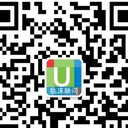Comparison of curative effects between mammotome-assisted minimally invasive resection (MAMIR) and traditional open surgery for gynecomastia in Chinese patients: A prospective clinical study.
Sleutelwoorden
Abstract
To analyze and compare prospectively the curative effects between mammotome-assisted minimally invasive resection (MAMIR) and traditional open surgery (TOS) for gynecomastia in Chinese male patients, a total of 60 patients suffering from grade I and II gynecomastia, evaluated by automated whole-breast ultrasound (AWBU), were recruited and randomly divided into TOS and MAMIR groups (each n = 30). The postoperative scar size, healing time, patient hospital stay, postoperative satisfaction, postoperative pain, and complications including edema and bruising were analyzed. The participants were followed up for 1 week, 1 month, 6 months, and 1 year after surgery. Compared with patients who received TOS, patients in the MAMIR group had significantly smaller scar sizes (0.40 ± 0.08 cm vs 5.34 ± 0.38 cm, P < 0.01), shorter healing times (3.67 ± 0.71 days vs 7.90 ± 0.92 days, P < 0.01), and hospitalization (2.60 ± 0.62 vs 7.17 ± 0.83 days, P < 0.01), as well as higher postoperative satisfaction (4.70 ± 0.60 vs 3.20 ± 0.55 scores, P < 0.01), respectively. Patients in the MAMIR group experienced postoperative mild pain significantly more often than those in the TOS group (6.70 ± 1.06 vs 4.13 ± 0.78 scores, P < 0.01, respectively), but with significantly less postoperative severe pain (53.33% vs 0.00%, P < 0.000). While the incidence rate of edema and bruises was significantly higher in the MAMIR group compared with the TOS group (47% vs 17%, P = 0.013 and 54% vs 20%, P = 0.007, respectively). MAMIR had advantages for curative effects compared with traditional open surgery. However, the recurrence rate in patients needs to be further studied.



